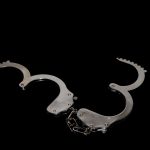Judge’s Decision Was a “Substantial Miscarriage of Justice”

Kenneth Bell was being held in prison awaiting trial on allegations of sexual assault, when he was savagely attacked on 16 June 2013, suffering a fractured eye socket, traumatic brain injury, and left in a coma for several days.
Due to his injuries, Mr Bell was assessed as unfit to stand trial. However, his condition gradually improved and an application was made for a trial by judge alone, as his ability to process information had been impaired.
The defendant stood trial in the District Court of NSW before newly-appointed judge Siobhan Herbert, who made a number of highly questionable decisions during the trial – essentially allowing the prosecution to present favourable material at will whilst rejecting multiple pieces of exculpatory evidence which were clearly admissible, and preventing the defence from conducting permissible and appropriate questioning.
On 3 June last year, the judge found Mr Bell guilty of sexually assaulting a woman whilst giving her a nude massage, and sentenced him to imprisonment.
“Substantial miscarriage of justice”
Mr Bell appealed against his conviction on the ground that the verdict of the trial judge was unreasonable or was not supported by the evidence.
On 29 May this year, the New South Wales Court of Criminal Appeal (NSWCCA) quashed Mr Bell’s convictions and entered a verdict of acquittal.
The appeal court, which was comprised of Chief Justice Bathurst, Justice McCallum and Justice Adams, handed down its judgement on 28 August. The list of reasons leading to the finding that “a substantial miscarriage of justice” had occurred was lengthy and the judgment scathing.
“We have concluded that there were so many significant inconsistencies and anomalies in the evidence as to point unequivocally to the conclusion that the verdict was unreasonable, or cannot be supported, having regard to the evidence,” the court remarked.
Intimate relationship
Mr Bell was 52 at the time of the alleged offences. Prior to the incident, he had been in an intimate relationship for six months with the 28-year-old complainant, who he gave the massage to. At the time, the woman lived at home with her three daughters.
Although the pair had split up, Mr Bell continued to visit the woman, who suffered from scoliosis. Mr Bell would sometimes provide her with massages in order to ease the pain of her condition and, on occasion, these massages would lead to consensual sexual intercourse.
On 27 April 2013, the woman collected Mr Bell and his friend in her car. The three went back to her house and drank heavily. The woman became ill and vomited. Over the course of the night, she sent text messages to her ex-husband, falsely claiming that Mr Bell had not been invited to the house.
The next day, Mr Bell offered the woman a massage, to which she agreed. The pair went into the woman’s room. She removed her top, and Bell began to massage her. At some point, Sharon White, the woman’s neighbour, appeared at the front door and the complainant went to speak with her.
The allegations
At some point, Mr Bell pulled down the woman’s tracksuit pants and touched at the side of her vagina. The Crown alleged that the complainant grabbed his hand and said, “Please don’t”, and the defendant then inserted his finger into her vagina in a rough manner.
This was the basis for a charge of sexual intercourse without consent, contrary to section 61I of the Crime Act 1900, which carries a maximum penalty of 14 years imprisonment.
The woman said Mr Bell then rolled her over onto her back and continued the massage. She said he then began to kiss her breasts. This was the basis for a charge of indecent assault under section 61L of the Crimes Act, which carries a maximum penalty of 5 years imprisonment.
It was further alleged that Mr Bell then proceeded to try and insert his penis into the woman, and continued to do so even after she asked him to stop. He was charged as a result with attempted sexual intercourse without consent, under section 61I and the ‘attempt’ provision of section 344A of the Act.
“Inconsistencies and anomalies”
The NSWCCA listed fourteen reasons as to why Mr Bell’s guilt was not established beyond reasonable doubt.
These include that the woman gave vastly differing accounts of what happened on the day of the incident. The justices found this “impacted adversely on the reliability of her evidence,” and that the trial judge didn’t give “the necessary degree of scrutiny to her evidence.”
Another reason was that the neighbour, Ms White, gave evidence that the woman told her after the incident that she wasn’t sure if a sexual assault had actually taken place. However, the trial judge rejected this evidence, failing to provide a reason for doing so.
Inadmissible evidence
There was evidence that Mr Bell and the woman had continued to have a close relationship after he was released on bail for the alleged offences.
However, when Mr Bell’s criminal defence lawyers wanted to cross examine the woman about this continuing “close contact,” the trial judge disallowed the questioning, incorrectly finding that it contravened section 293 of the Criminal Procedure Act 1986.
That section provides that “evidence is inadmissible in a trial for sexual offences if it discloses or implies that a complainant has or may have taken part or not taken part in any sexual activity.” But Bell’s legal team correctly pointed out that the “close relationship” did not imply anything sexual at all. Moreover, the Crown did not object to the line of questioning.
Rather, the judge took it upon herself to prohibit the line of questioning of her own accord.
Motive to lie
There was also evidence that the woman’s ex-husband was threatening to have her children removed if she didn’t end her relationship with Mr Bell. The trial judge found that this would not have been a motive for making a false claim of sexual assault, but Her Honour again gave no reason for her decision.
“The existence of the motive cast further doubt on the complainant’s credibility and reliability,” the NSWCCA panel found.
Conclusion
“We are left with a real doubt that the applicant committed the offence and that it was a doubt which should have been shared by the trial judge,” the justices concluded.
“A consideration of the reasons of the trial judge not only does not dispel that doubt, but rather further fortifies it.”
Court backlog
At the time of the trial, Judge Herbert had only recently been appointed as a judge NSW District Court.
On March 21 last year, then NSW attorney general Gabrielle Upton announced that Ms Herbert, who was then a Crown prosecutor, and then Deputy Director of Public Prosecutions (DPP) John Pickering, were to be made NSW District Court judges.
Due to a lack of resources, there were almost 2,000 cases backed up in the NSW District Court in 2015 and through to 2016. The two new judicial officials were to help clear the backlog, and ease the burden on other judges and the system generally.








